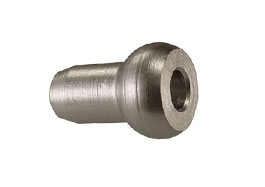
Whether a cable is used in a landing gear pulley system, a machine or any other application, it may require an anchor point. Anchor points are designed to terminate the ends of cables while simultaneously securing the cables in place. If you need to create an anchor point for a cable, you may want to use a shank ball. Shank balls offer a simple and effective anchor point for most types of cables.
Overview of Shank Balls
Shank balls are metal anchor points for cables. As their name suggests, they consist of a shank and a ball. The shank is the narrow rod-shaped body, whereas the ball is the round head.
Shank balls are single-piece anchor points consisting of a shank with an integrated ball. As long as a cable fits through them, you can use them to terminate the cable.
How Shank Balls Work
You can terminate the end of a cable by securing it to a shank ball. Shank balls are hollow. Both the shank and the integrated ball are hollow. Therefore, they can accommodate a cable.
After running a cable to the desired location, you can terminate it by placing it through the shank ball. Shank balls are essentially swage fitting. You can swage a cable onto the end of a shank ball. Just slide the cable through the shank ball, after which you can secure it in place. With its round, ball-shaped head, the shank ball shouldn’t move. Even if the cable creates a pulling force, the shank ball will remain in place — all while safely and securing the cable.
What Are Shank Balls Made Of?
Most shank balls are made of stainless steel. They are typically used in non-climate-controlled environments. And without a climate-control system, they are exposed to humidity.
Humidity can cause certain materials to rust. Iron, as well as many iron alloys, are susceptible to rust when exposed to humidity. Stainless steel contains iron, but it features at least 11% chromium as well. Chromium has anti-rust properties. It protects the iron from oxidation. Of course, there are different types of shank balls, but most of them are made of stainless steel.
Cables often require an anchor point. Rather than connecting the end of a cable to a random fastener, you should use a shank ball. Also known as balls and shanks, they are swage fittings. Shank balls feature a shank and a ball-shaped head, which you can use to easily terminate cables.



